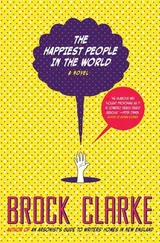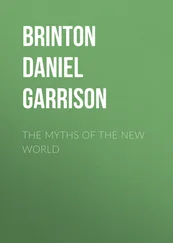After lunch and a short siesta, the heat of the day cools, and the performance is repeated. The pensioners rest their walking sticks against the metal green benches, stocky men stroll two by two in their berets, serious trousers and olive-coloured cardigans, always nattering away, the birds in the surrounding orange trees by now engaged in deep debate too. Outside the casitas kids walk their dogs and chase their footballs, and a group of roller-skating tweens flies down the Avenida and into the village park, past the outdoor gym, which is populated by grown-ups doing their work-outs and children using it as a climbing frame. The younger children sit on their mothers’ laps on the benches, eating crisps. If you do a circuit of the village, by the time you return half an hour later the congregations around each bench have rearranged slightly, but the principle remains.
Between the Ayuntamiento and Matarredonda a lush green field spreads motionless in the afternoon sunshine, only occasionally disturbed by the two white horses grazing in it. When the sun finally sets, it does so in a blaze of pink over El Rubio to the west, casting an irresistible peach glow over the whitewashed walls of the town, with Estepa sitting prettily on the balcony of the mountains to the south. When there is more than, say, 50 per cent cloud coverage, which there very rarely is, dusk is a moodier affair of purplish, deep-sea blues, but no less picturesque.
‘We have every reason to keep fighting’, proclaims a slightly torn Sánchez Gordillo election poster still clinging to the wall of the parque natural . It’s not just their work, but their lifestyle that they’re fighting to keep – and in almost every instance, it’s one that they created from the space they won for themselves: not just via the economically empowering struggle for land, but by deliberately building the infrastructure for a cultural and social life far out of proportion with their size.
The Gordillistas never miss an opportunity to remind people of the connection between the marinaleño quality of life and la lucha . ‘You truly believe that without struggle we could achieve all this?’ demanded the central spread of the 2011 election manifesto brochure, illustrating such achievements with countless pictures of high days and holidays, community activities, sports teams and facilities, and organised fun for children, pensioners and everyone in between.
When the streets are your social centre, it’s important to keep them clean. All the house facades are immaculate, the majority of them gleaming white, with only a few rogues in yellow or orange, or covered in beautiful Moorish mosaic tiles. On a morning stroll around the village you’ll most likely encounter a few women outside their front doors, sweeping dust and twigs from the pavements. One matriarch beats the front of El Sur with a kind of cat-o’-nine-tails to get the dust out. It still hangs in the air a little, augmenting the hazy sunshine with an extra layer of fuzz. It’s a constant struggle, when the motorbikes haring down Avenida de la Libertad are kicking up their own oily smoke too, and the lorries are churning up the dust.
On Sundays, on Calle de Federico García Lorca, one household literally airs its laundry in public, hanging wet linen on a line between the orange trees on the pavement. Nobody minds. Public space is negotiated space, and if someone has a problem with a fellow neighbour’s use of it, they will mention it directly. It’s too hot in this part of the world to waste time on working yourself up with passive-aggressive grumbling.
If you’re not taking the most important meal of the day at home, there’s a small range of modest but tremendously cheap tapas dishes in the bars of the village, usually costing one euro each, same as the beers, the glasses of wine and the coffees. And just on the very edge of the village, near the road sign which indicates you are entering Marinaleda, is La Bodega – a proper, spacious family restaurant for passing traffic and locals alike. By 3.30 on weekday lunch-times it’s pretty much full, with fifteen or so cars, lorries and tractors parked outside.
Extended families, work associates and groups of retirees eat there often in large groups of more than ten, drinking decent reds and helping themselves from great communal clay pots of chicken and potatoes. Competing with the flamenco-pop on the stereo is a whirring ceiling fan and The Simpsons , dubbed, on a TV in a high corner. There’s an open fire, an old-fashioned wood-burning heater, a giant, human-being-sized amphora turned into a plant pot, open shelves messily stacked with wine bottles, and hams hanging behind the bar. The atmosphere reflects the gloriously unhurried Andalusian ethic: no hay bulla , there’s no fuss. Even the sopa de mariscos , seafood broth, off the daily menú del día takes over thirty minutes to arrive; but if you’ve got half-broken, briney olives from the local fields, a good book and a sparkling cañita , there really is no fuss.
You can eat a long, langorous lunch, but people also head there in the evenings for less formal tapas plates of rich rabo de toro , ox tail, secreto , a gloriously moist, fat-marbled cut of pork, and flamenquín , the peculiar Andalusian hybrid of a scotch egg and a sausage roll. Eating there with Javi and his mates on a Friday night, they taught me the kind of key contemporary Spanish phrases you don’t learn in a language class. Phrases such as dinero negro , black money, and that Rajoy’s government had recently offered the nation’s corrupt businesspeople an amnistía fiscal . This meant that they would clean their dirty money, no questions asked, no charges pressed, only provided they brought it back to Spain and paid 10 per cent tax on it. And then there was gossip about the various senior politicians embroiled in various corruption scandals. I struggled to keep up with which one was which: there were simply that many cases in the news at any one time.
After some light dinner like this, at around 9 or 10 pm, for the younger adults (and many of the older ones) weekend nights mean more drinks, gently sliding along from bar to bar, either in the village or a neighbouring pueblo , and eventually some dancing.
In terms of decibel levels Marinaleda is generally a quiet village, but when they celebrate, they do so in a manner which is once again far out of proportion to their size. The major annual festivals – most of them Catholic in origin, now stripped of all religious rituals and icons – draw in thousands of outside visitors, from neighbouring villages and beyond: chiefly the pre-Lenten carnaval blow-out, the week-long July feria , and Holy Week recast as semana cultural . In addition there are the famous spring and summer rock concerts, either in Palo Palo or outdoors in the feria grounds, which frequently see the village double in size.
Sport and physical activity are treated with similar enthusiasm. Marinaleda has a number of football teams for different ages and levels – including Unión Deportiva Marinaleda, founded in 1986, which until recently punched above its weight, in the Spanish fourth division. There is also a large outdoor swimming pool, four tennis courts, an indoor gym, an outdoor gym, and in the 500-capacity multi-purpose sports pavilion (the huge white building adorned with Che Guevara’s face), basketball, volleyball, gymnastics, judo and handball, among other things. On summer evenings, films are screened – for free, of course – at the purpose-built amphitheatre that sits tucked away in the parque natural . Several hundred marinaleños bring cushions, food and drink from home, and settle in for the night, while the kids scamper around in the vicinity. All of these, it must be said, are achievements of the Sánchez Gordillo era.
Читать дальше












